Tiny Living & Minimalist Lifestyle: Simple Steps to Clarity
Category: Lifestyle
Embrace Tiny Living and Minimalism for a Clearer Life
If you’ve found yourself overwhelmed by clutter, distractions, and a fast-paced life, you’re not alone. Many individuals seeking a more meaningful, less stressful existence turn to tiny living and minimalist lifestyle principles to regain control and clarity. Whether you’re a beginner intrigued by tiny homes and simplified possessions, or you've dabbled in minimalism but struggle to maintain consistency, this post is crafted precisely for your journey. You likely landed here searching for practical guidance to downsize your space, simplify your belongings, and realign your priorities without sacrificing comfort or joy. This article goes beyond trendy tips, offering an insightful, structured approach that blends the philosophy of minimalism with the pragmatic aspects of tiny living. We understand your need for actionable advice that fits your unique lifestyle, tailored to inspire and empower your transition toward a simpler, more fulfilling way of living. By the end, you’ll have a comprehensive roadmap that addresses the emotional, financial, and logistical facets of adopting tiny living and minimalism, setting you confidently on your path to clarity and purpose.
- Embrace Tiny Living and Minimalism for a Clearer Life
- Understanding Tiny Living: More Than Just Small Homes
- The Philosophy of Minimalist Lifestyle: Intentional Living and Valuing Quality Over Quantity
- Benefits of Combining Tiny Living and Minimalism
- Assessing Your Readiness and Setting Realistic Goals
- Practical Steps to Downsize Your Space: Tips for Decluttering Effectively, Choosing Multi-Functional Furniture, and Designing a Tiny, Efficient Living Environment
- Simplifying Your Belongings and Daily Habits: Strategies for Mindful Decluttering and Intentional Living
- Financial Considerations: Budgeting for Tiny Homes and Managing Expenses in a Simpler Lifestyle
- Emotional and Social Aspects: Navigating Challenges and Nurturing Connections in Tiny Living and Minimalism
- Sustaining Your Lifestyle Long-Term: Preventing Relapse, Adapting Your Mindset, and Finding Community Support
- Inspiring Examples and Resources: Stories, Tools, and Communities to Support Your Tiny Living and Minimalist Journey
Understanding Tiny Living: More Than Just Small Homes
Tiny living is often mistaken as simply residing in a small physical space, such as a tiny house or micro-apartment. However, tiny living extends far beyond the square footage of your dwelling—it's a deliberate lifestyle choice centered on intentionality, simplicity, and sustainability. Rooted in the minimalist ethos, tiny living challenges conventional ideas of success tied to material accumulation and larger homes. Its origins can be traced back to rising housing costs, environmental concerns, and a cultural shift toward valuing experiences over possessions.
At its core, the tiny living movement emphasizes:
- Maximizing functionality within minimal space, encouraging creativity and smart design.
- Reducing material consumption by prioritizing essential items and shedding excess belongings.
- Enhancing financial freedom by lowering housing expenses, enabling a focus on what truly matters.
- Promoting environmental sustainability through smaller ecological footprints and resource conservation.
- Fostering mindfulness and intentional choices in everyday life, from possessions to time management.
By embracing these core values, tiny living inspires a profound simplification of life that nurtures clarity, freedom, and purpose. Whether you adopt a tiny home, downsize to a smaller apartment, or simply apply these principles to your current lifestyle, understanding the deeper meaning behind tiny living is key to sustaining meaningful change. This holistic approach to minimalism ensures that tiny living is not just a trend but a transformative movement toward a more deliberate and fulfilling way of life.
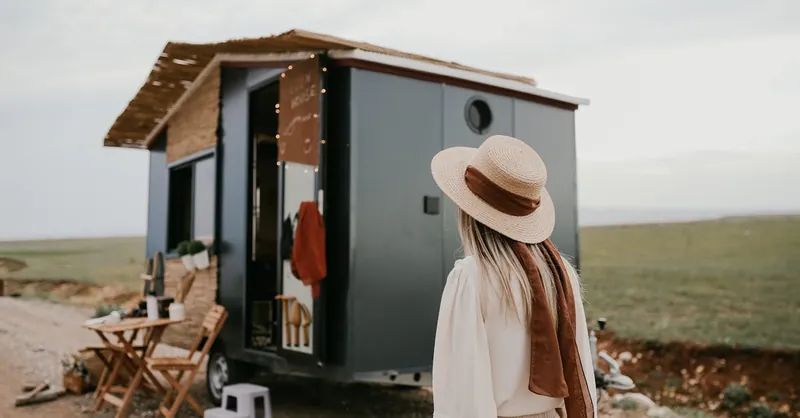
Image courtesy of Melike B
The Philosophy of Minimalist Lifestyle: Intentional Living and Valuing Quality Over Quantity
At its essence, the minimalist lifestyle is a powerful mindset centered on intentional living, reducing excess, and prioritizing quality over quantity. Minimalism is not merely about owning fewer things—it’s about fostering a deeper awareness of how possessions, habits, and choices impact your well-being and overall happiness. This philosophy challenges the consumer-driven culture that equates accumulation with success, urging you instead to focus on what truly adds value and meaning to your life.
Key principles of the minimalist mindset include:
- Intentionality: Making conscious decisions about what you bring into your life—whether it’s physical items, commitments, or relationships—ensures that every addition serves a clear purpose.
- Quality Over Quantity: Choosing fewer belongings but higher-quality items leads to greater satisfaction, durability, and less waste, aligning perfectly with sustainable living goals.
- Reducing Mental Clutter: Minimalism extends beyond physical possessions to simplify your mental space, reduce stress, and cultivate mindfulness.
- Embracing Enough: Recognizing when your needs are met fosters gratitude and contentment, freeing you from the pursuit of excessive consumption.
- Sustainability and Responsibility: Minimalism encourages environmentally conscious choices by minimizing waste and supporting ethical products.
By adopting this philosophy, you create a lifestyle where every object and action is aligned with your values, enhancing clarity and freedom. This mindset complements tiny living by transforming not only the space you occupy but also how you relate to your environment and your time. Ultimately, minimalism invites you to live deliberately, balancing simplicity with richness in experience and purpose.

Image courtesy of Cup of Couple
Benefits of Combining Tiny Living and Minimalism
When tiny living and minimalism merge, the result is a powerful lifestyle shift that delivers profound benefits across financial, mental, and environmental dimensions. Downsizing your physical space and possessions is not just about fitting into a smaller home—it's about reclaiming control over your resources, your mindset, and your impact on the planet.
Financial Freedom Through Simplification
One of the most immediate rewards of combining tiny living with minimalism is increased financial freedom. Smaller living spaces generally cost less to rent, buy, and maintain, significantly reducing your monthly expenses. Paired with a minimalist approach to possessions—buying only what’s necessary and choosing quality over quantity—you can drastically cut back on impulsive spending, debt, and clutter-related costs. This financial decluttering frees up money to invest in experiences, savings, or passions rather than accumulating more “stuff.” Ultimately, living tiny and minimal cultivates a budget-conscious mindset that promotes sustainable wealth and long-term stability.
Mental Clarity and Emotional Well-being
Reducing your living space and simplifying belongings creates an environment that naturally fosters mental clarity and emotional calm. An uncluttered home minimizes distractions, lowers stress, and encourages mindfulness by allowing you to focus on what truly matters. The intentional lifestyle rooted in minimalism heightens your awareness of daily habits, helping to break free from consumer culture’s noise and overwhelm. Together, these philosophies nurture a sense of peace, purpose, and satisfaction—qualities that are often elusive in larger, more chaotic environments.
Positive Environmental Impact
Adopting tiny living alongside minimalist practices also leads to a significantly smaller ecological footprint. Tiny homes require fewer building materials, consume less energy, and often integrate sustainable design solutions. Minimalism complements this by lowering consumption, reducing waste, and favoring eco-friendly products. By embracing both approaches, you contribute to resource conservation and waste reduction, aligning your lifestyle with environmental stewardship. This synergy helps create a more sustainable world, proving that simplicity and responsibility are deeply interconnected.
By understanding and appreciating these multifaceted benefits, you’ll see how the fusion of tiny living and minimalism provides a holistic pathway to a freer, clearer, and greener way of life.
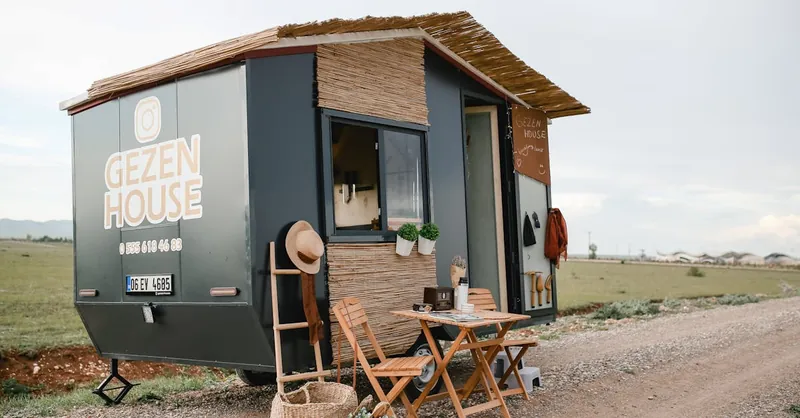
Image courtesy of Melike B
Assessing Your Readiness and Setting Realistic Goals
Embarking on the journey toward tiny living and a minimalist lifestyle requires honest self-reflection and clear goal-setting to ensure a smooth, sustainable transition. Before downsizing your space or paring down your possessions, it’s crucial to understand your underlying motivations, lifestyle needs, and potential challenges. This foundational step helps you create realistic expectations, avoid overwhelm, and tailor your approach to fit your unique circumstances.
Reflect on Your Motivations
Ask yourself why you are drawn to tiny living and minimalism. Common motivations include:
- Desire for financial freedom by lowering housing and consumption costs.
- Seeking mental clarity and reduced stress through decluttering.
- Environmental concerns, aiming to minimize your ecological footprint.
- Simplifying your lifestyle to focus on meaningful experiences and relationships.
- Increasing mobility or flexibility, such as living in a mobile or multi-functional space.
By clearly identifying your "why," you foster commitment and can better navigate periods of adjustment.
Identify Potential Challenges
Transitioning to tiny living and minimalism is rewarding but often involves obstacles. Consider factors like:
- Emotional attachment to possessions or a larger home.
- Lifestyle habits that rely on space or particular items.
- Family or household members’ needs and expectations.
- Logistical issues such as zoning laws, storage, or workspace demands.
- Financial implications of downsizing, including initial setup costs.
Acknowledging these challenges upfront prepares you to seek solutions and maintain realistic goals.
Set Specific, Achievable Goals
Setting clear goals transforms your vision into actionable steps. Effective goals are:
- Specific: Define precisely what you want to accomplish (e.g., reduce belongings by 50% or move into a 300 sq ft space).
- Measurable: Track progress through tangible milestones.
- Achievable: Align goals with your current resources and constraints.
- Relevant: Ensure goals resonate with your core motivations.
- Time-bound: Set deadlines to maintain momentum.
For example, a goal might be, “Downsize to a 350 sq ft apartment within 6 months while reducing possessions by half.” This clarity improves focus and motivation.
By thoroughly assessing your readiness and setting realistic goals, you create a solid foundation for embracing tiny living and minimalism. This reflective process not only enhances your chances of success but also aligns your lifestyle transformation with deeper values and practical realities—key ingredients for a lasting, fulfilling change.
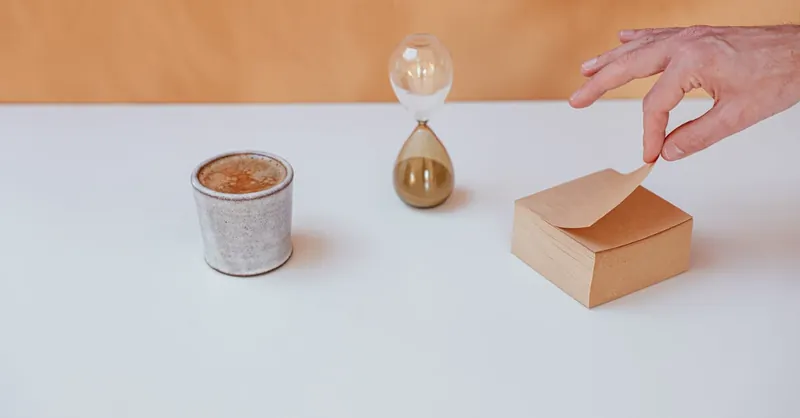
Image courtesy of Cup of Couple
Practical Steps to Downsize Your Space: Tips for Decluttering Effectively, Choosing Multi-Functional Furniture, and Designing a Tiny, Efficient Living Environment
Downsizing your living space is a transformative process that requires more than just removing excess items; it demands intentional decluttering, smart furniture selection, and thoughtful design to maximize every inch of your tiny home. To create a truly functional and minimalist environment, start by decluttering effectively: categorize your belongings into what you truly need, use regularly, or cherish deeply. Apply the “one-in, one-out” principle to prevent accumulation and embrace the mindset of keeping only what adds value and joy to your life.
Next, prioritize multi-functional furniture that serves dual or multiple purposes, such as fold-away tables, sofa beds, or storage ottomans. These pieces not only save space but also reduce the need for unnecessary possessions, aligning perfectly with minimalist philosophy. Incorporate built-in storage solutions, under-bed drawers, and vertical shelving to optimize vertical space and maintain an organized, open atmosphere.
When it comes to designing a tiny, efficient living environment, focus on simplicity, natural light, and clear zones for different activities (sleeping, cooking, working). Utilize neutral colors and minimal décor to enhance the feeling of spaciousness while fostering calm and clarity. Remember, thoughtful spatial planning combined with minimalist principles empowers you to live comfortably and intentionally in a smaller footprint, reinforcing both the practical and philosophical benefits of tiny living.
By following these practical steps, you’ll create a streamlined, efficient space that supports your minimalist lifestyle, reduces stress, and maximizes your freedom—all crucial elements for a clearer, more purposeful life.
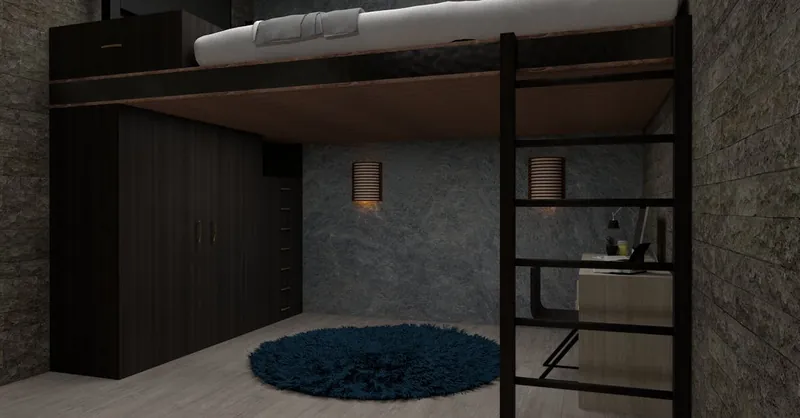
Image courtesy of Pușcaș Adryan
Simplifying Your Belongings and Daily Habits: Strategies for Mindful Decluttering and Intentional Living
A pivotal step in embracing tiny living and minimalist lifestyle is simplifying your belongings and daily habits. Letting go of unnecessary items not only frees up physical space but also reduces mental clutter, creating room for what truly matters. Begin by adopting a mindful approach to decluttering: assess each possession with questions like, “Does this item serve a purposeful role?” or “Does it bring me joy or enhance my life?” Prioritize keeping belongings that align with your values and daily needs, and consider donating, selling, or recycling anything extraneous. This deliberate process helps cultivate gratitude and reinforces your commitment to a streamlined lifestyle.
In addition to physical decluttering, adopting mindful purchasing habits is essential to maintaining minimalism long-term. Shift from impulsive buying to intentional acquisition by asking whether new items contribute meaningfully or simply add clutter. Embrace practices such as creating a “waiting period” before purchases, choosing quality over quantity, and supporting sustainable, ethically made products. Alongside material simplification, crafting daily routines tailored to minimalist values enhances your overall well-being. Focus on habits that promote efficiency, reduce decision fatigue, and encourage presence—like setting clear priorities, limiting multitasking, and scheduling downtime to recharge. By integrating these strategies, you establish a lifestyle rhythm that supports clarity, purpose, and simplicity, empowering lasting fulfillment in your tiny, minimalist home.
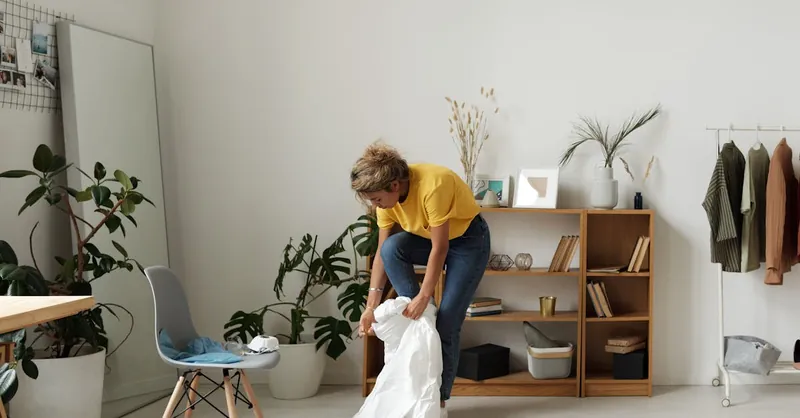
Image courtesy of Michelangelo Buonarroti
Financial Considerations: Budgeting for Tiny Homes and Managing Expenses in a Simpler Lifestyle
One of the most compelling reasons to embrace tiny living and minimalism is the substantial financial benefits that come with downsizing and simplifying your lifestyle. Budgeting effectively for a tiny home or smaller living space involves understanding both initial costs and long-term savings. While tiny homes often require upfront investment—whether purchasing a pre-built unit, custom-building, or adapting an existing small space—the overall expenses including utilities, maintenance, and property taxes tend to be significantly lower than those of traditional homes. This cost reduction translates into less debt, smaller mortgages or rent payments, and the freedom to allocate funds towards savings, travel, or personal development.
To manage expenses wisely in a minimalist lifestyle, consider these financial aspects:
- Create a detailed budget that accounts for current living costs versus projected expenses in your tiny home or downsized space, including one-time and recurring costs.
- Factor in hidden or unexpected fees such as insurance, zoning permits, or modifications to match your lifestyle needs.
- Anticipate savings from reduced consumption, such as lower energy bills, minimal upkeep costs, and fewer purchases of non-essential goods.
- Adopt a minimalist spending mindset—prioritize needs over wants and embrace mindful purchasing habits to avoid accumulating unnecessary items.
By consciously budgeting and tracking your expenses, tiny living becomes not just an aesthetic or philosophical choice, but a sustainable financial strategy. Embracing this approach fosters a simpler, more intentional relationship with money, leading to long-term financial stability and the peace of mind that comes from living well within your means. This practical financial foundation enables you to focus your time and energy on what truly enriches your life rather than on constant financial stress or material accumulation.

Image courtesy of Mikhail Nilov
Emotional and Social Aspects: Navigating Challenges and Nurturing Connections in Tiny Living and Minimalism
Transitioning to a tiny living and minimalist lifestyle often brings rewarding clarity but can also surface significant emotional hurdles and social pressures that many overlook. Letting go of possessions tied to memories or identity may trigger feelings of loss, anxiety, or uncertainty. It’s natural to experience moments of doubt, especially when societal norms equate success with material wealth and spacious homes. Overcoming guilt around downsizing or resisting outside judgments requires cultivating a strong sense of purpose and self-compassion. Embracing minimalism means redefining what brings meaning—shifting focus from “more” to what truly enriches your emotional well-being.
On the social front, tiny living can challenge traditional notions of hosting, privacy, and family dynamics. Maintaining meaningful relationships while living in limited space involves clear communication and creative compromises. Prioritizing quality time over quantity of belongings or gatherings helps deepen connections even in compact environments. Additionally, building a supportive community of like-minded individuals—whether locally or online—can provide encouragement and shared wisdom to navigate the unique lifestyle stresses. Recognizing that emotional resilience and social bonds are integral to minimalist living ensures your journey fosters not only simplicity but also authentic human fulfillment. By addressing these emotional and social dimensions thoughtfully, you empower yourself to thrive in tiny spaces with a rich, connected, and joyful life.

Image courtesy of Kampus Production
Sustaining Your Lifestyle Long-Term: Preventing Relapse, Adapting Your Mindset, and Finding Community Support
Maintaining a tiny living and minimalist lifestyle over the long term requires more than just an initial declutter or downsizing—it's an ongoing commitment to intentionality, adaptability, and connection. To prevent relapse into clutter, continually revisit your core values and motivations. Regularly audit your belongings, focusing on whether each item still serves a meaningful purpose or contributes to your well-being. Adopting habits such as the “one-in, one-out” rule ensures that new acquisitions do not disrupt your streamlined space, safeguarding against accumulation that can slowly erode minimalism.
In parallel, it’s essential to cultivate a dynamic minimalist mindset that evolves with your life circumstances. This involves embracing flexibility rather than rigidity—allowing changes in your goals, habits, or environment to shape a personalized version of minimalism that fits current needs. Journaling your experiences and reflecting on how your tiny living journey aligns with your values can help reinforce this mindset. Additionally, setting periodic goals for further simplification or mindful consumption keeps your minimalist practice fresh and purposeful.
Lastly, community support plays a critical role in sustaining minimalist living. Engaging with like-minded individuals, whether through local meet-ups, online forums, or social media groups, fosters accountability, inspiration, and shared learning. Surrounding yourself with a support network that understands the challenges and rewards of tiny living helps normalize your lifestyle choice and offers practical advice when obstacles arise. By proactively preventing clutter relapse, continuously adapting your mindset, and finding community support, you create a resilient framework that empowers lasting clarity, freedom, and fulfillment in your minimalist, tiny living journey.
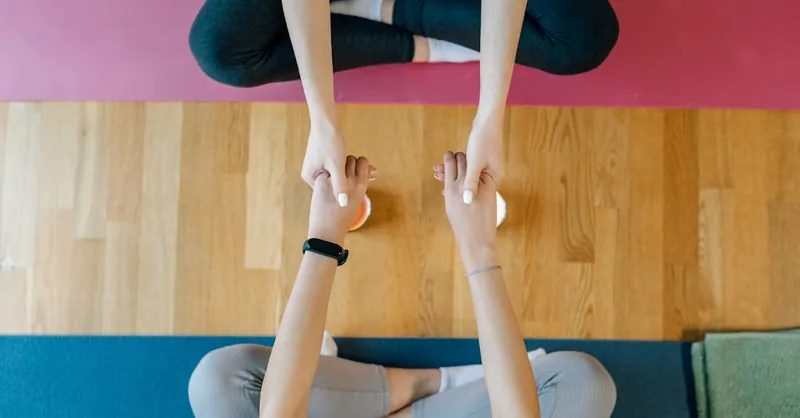
Image courtesy of Alena Darmel
Inspiring Examples and Resources: Stories, Tools, and Communities to Support Your Tiny Living and Minimalist Journey
Embracing tiny living and a minimalist lifestyle becomes more attainable and motivating when you connect with real-life stories and practical resources from those thriving in this transformative way of life. Countless individuals and families have successfully downsized their spaces, simplified possessions, and redefined their priorities to achieve greater freedom, clarity, and environmental impact. For example, nomadic tiny home dwellers showcase how mobility and minimalism create opportunities for adventure without the burden of excess. Meanwhile, minimalist families highlight how intentional living strengthens relationships and reduces financial stress, proving that this lifestyle is adaptable to diverse needs and stages of life.
To deepen your understanding and sustain your progress, consider tapping into the following key resources and communities:
- Books and Blogs
- “The Life-Changing Magic of Tidying Up” by Marie Kondo – A foundational guide to mindful decluttering and organizing.
- The Tiny Life (thetinylife.com) – A popular blog offering practical advice on tiny homes, downsizing, and sustainable living.
-
Becoming Minimalist by Joshua Becker – Insightful perspectives on simplifying life and cultivating intentional habits.
-
Video Channels and Documentaries
- YouTube channels like Living Big in a Tiny House spotlight inspiring tours and stories from tiny house residents worldwide.
-
Documentaries such as Minimalism: A Documentary About the Important Things provide compelling insights into the minimalist movement and its emotional benefits.
-
Tools and Apps
- Inventory and decluttering apps like Sortly or Clutterfree help track, organize, and decide what to keep or let go.
-
Budgeting tools such as You Need A Budget (YNAB) assist in managing financial goals aligned with minimalist and tiny living lifestyles.
-
Online and Local Communities
- Forums like Reddit’s r/TinyHouses and r/Minimalism offer peer support, advice, and shared experiences that keep motivation high.
- Local meetups or tiny house festivals can connect you with others in your area, fostering a network of encouragement and resource sharing.
Integrating inspiration from diverse stories and verified resources enriches your tiny living and minimalist journey, making it more relatable, actionable, and sustainable. By leveraging these tools and community connections, you’ll cultivate the knowledge, resilience, and enthusiasm needed to thrive in your pursuit of simplicity, freedom, and purposeful living.
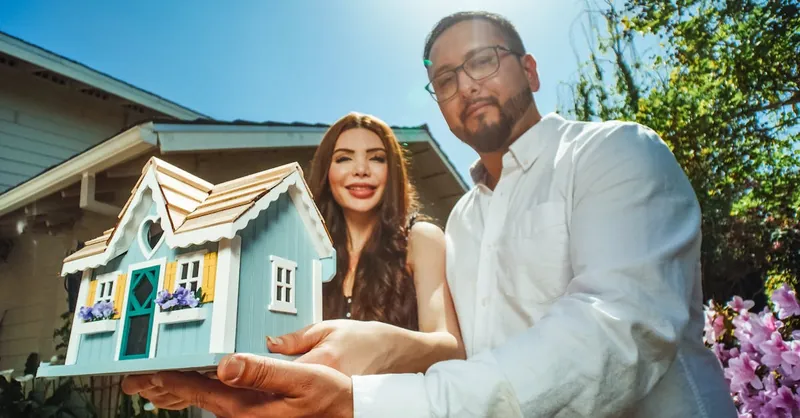
Image courtesy of Kindel Media
